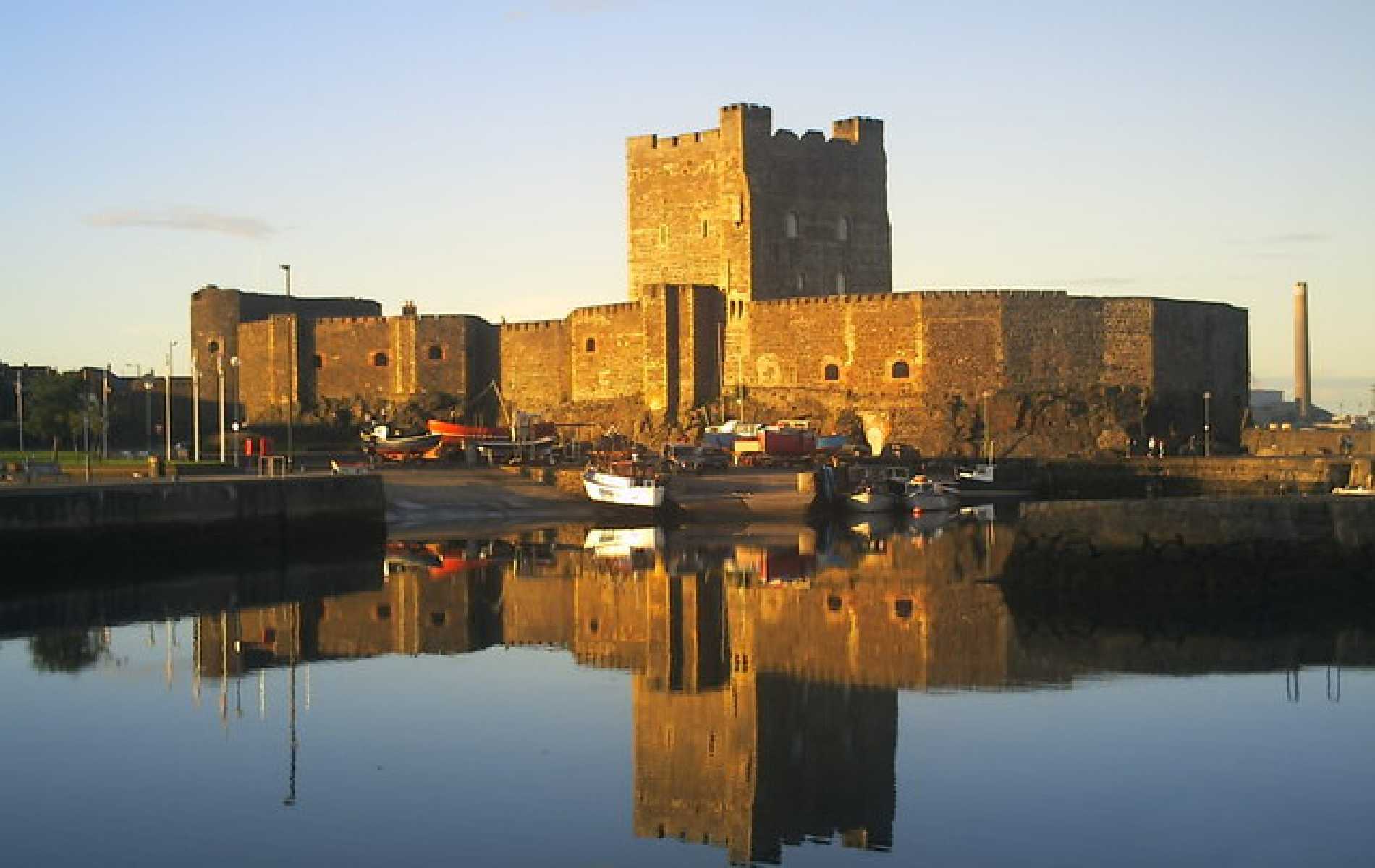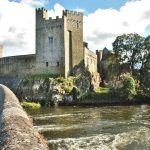Carrikfergus, or Carrickfergus, is a large walled town in County Antrim Northern Ireland. It has a population of around 13,000. The main attraction in the area is of course Carrickfergus Castle. Just 10 miles from Belfast means that it is doable as a day trip from Belfast city.
Table of Contents
Welcome to Carrickfergus
The name of the town derives from the Irish language “An Carraig Fhearghais” meaning “The Rock of Fergus”. The castle at Carrickfergus was built on a rocky promontory by John de Courcy in 1177 and overlooks Belfast Lough and the North Channel. King John gave De Courcy control over land covering an area that roughly corresponds to counties Antrim and Down in modern times when he created the country of Ulster for him around 1200.
Carrickfergus Castle
De Courcy built Carrickfergus Castle in the centre of town, starting in 1177. The first settlement developed around the castle, but this was later to be called Ballygowan. De Courcy lived in the castle until he died in 1219. The last Anglo-Norman Lord of Ulster, Hugh de Lacy “The Wolf”, was granted Carrickfergus after John de Courcy’s death by King Henry III of England on 9 November 1237. By this time Gaelic had become the primary language spoken there by many people at that time, despite the Norman invasion of Ireland in 1169 and introduction of English to Ireland.
Carrickfergus Castle sits on top of a volcanic plug and is made of local limestone. It is one of only a handful of Norman stone castles in the whole of Ireland, making it very unusual because most were built using different methods. It has been described as one of the best-preserved medieval castles in Ireland, despite being sacked and burned by the Scots in 1315. There are five towers on top of the rock including a square keep or great tower build towards the end of John de Courcy’s period as landowner (the others were built by Hugh de Lacy), which was partially destroyed when King Edward Bruce invaded Ulster in 1315. There is also a small dungeon.
There are a few other ruins that can be seen around the town including The Peel tower.
Visiting Carrickfergues Castle
Carrickfergus Castle is open from the end of March until the end of February each year. There is an admission fee for adults, students and children 17 & under.
Carrikfergus Castle is owned by Carrickfergus Borough Council. There are various events held at the castle throughout the year including a fireworks night. Carrickfergus is also home to the Carrickfergus Arts & Crafts festival every July.
Other Buildings in the Old Town
Some of the old buildings in the town are very interesting, such as an old house on Springfield Road. This was originally build in 1760 and is one of the oldest buildings in Northern Ireland. It is a two-story building with a basement and attic bays, a fireplace in each room, dormer windows and an unusual hipped slate roof. A house that was built on Market Street around 1530 contained the market for Carrickfergus and was surrounded by open ground from which stall holders could sell their wares and goods. It has a beautiful decorated front door and the original windows, one of which is still intact.
Carrickfergus was granted its first Charter of Incorporation in 1487 by King Henry VII, granting the people of Carrickfergus the right to hold a weekly market and two annual fairs. The charter also allowed for a town wall to be built so that “the good, sound and profitable inhabitants” could live in safety. The 15th century was a time when Carrickfergus became an important port with links to Scotland, Flanders and Bristol. The harbour area known as The Basin is an example of where this trade was carried out.
An old map of Carrickfergus from 1610 shows that the town had developed considerably. It has three streets radiating outwards from the castle walls: North, East and South. The Belfast–Carrickfergus turnpike road was built in 1755 and it is still possible to follow this route today. By 1790 there were major road improvements in Carrickfergus, with the population at around 2,000 people by 1831.
Carrickfergus Barracks
Carrikfergus Barracks are located nearby the castle and are home to an Army Reserve Unit and a Police Reserve Unit. There has been an army presence in Carrickfergus since 1797. From the 1920s until 1971 the barracks were a major centre for infantry training, which was relocated to Ballykinler Camp near Lisburn.
Carrick a Rede Rope Bridge
Carrick-a-Rede rope bridge is a small suspension bridge connecting two cliffs. The rope bridge was first built in 1755 and has since been rebuilt a number of times.
Walks in Carrickfergus
There are a range of walks that can be taken from Carrickfergus including the Coast Road to Larne, the Cockspur walk (a circular walk around Carrickfergus) and Caen Point along Belfast Lough. The Cave Hill Country Park which covers several kilometres of land between Carrickfergus and Whitehead is ideal for walking.
If you enjoyed this article you might also like to read about:



